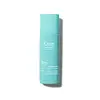Ultra Violette Queen Screen SPF 50 Super Glow Drops Versus Kate Somerville Hydrakate Illuminating SPF 50+ Drops
What's inside
What's inside
 Key Ingredients
Key Ingredients

 Benefits
Benefits

 Concerns
Concerns

 Ingredients Side-by-side
Ingredients Side-by-side

Water
Skin ConditioningHomosalate
Skin ConditioningOctyldodecanol
EmollientDicaprylyl Ether
EmollientMethylene Bis-Benzotriazolyl Tetramethylbutylphenol
UV FilterBis-Ethylhexyloxyphenol Methoxyphenyl Triazine
Skin ConditioningPropanediol
SolventDicaprylyl Carbonate
EmollientCetyl Alcohol
EmollientEthylhexyl Triazone
UV AbsorberLauryl Glucoside
CleansingPolyglyceryl-2 Dipolyhydroxystearate
Skin ConditioningGlycerin
HumectantCI 77492
Cosmetic ColorantMicrocrystalline Cellulose
AbsorbentPoly C10-30 Alkyl Acrylate
Emulsion StabilisingDecyl Glucoside
CleansingOryza Sativa Bran Wax
Skin ConditioningPhenoxyethanol
PreservativeHydroxyacetophenone
AntioxidantCI 77491
Cosmetic ColorantCI 77499
Cosmetic ColorantSaccharide Isomerate
HumectantCellulose Gum
Emulsion StabilisingPolyhydroxystearic Acid
EmulsifyingEthylhexylglycerin
Skin ConditioningSodium Lauroyl Sarcosinate
CleansingDisodium EDTA
Propylene Glycol
HumectantXanthan Gum
EmulsifyingSodium Citrate
BufferingCitric Acid
BufferingTocopherol
AntioxidantWater, Homosalate, Octyldodecanol, Dicaprylyl Ether, Methylene Bis-Benzotriazolyl Tetramethylbutylphenol, Bis-Ethylhexyloxyphenol Methoxyphenyl Triazine, Propanediol, Dicaprylyl Carbonate, Cetyl Alcohol, Ethylhexyl Triazone, Lauryl Glucoside, Polyglyceryl-2 Dipolyhydroxystearate, Glycerin, CI 77492, Microcrystalline Cellulose, Poly C10-30 Alkyl Acrylate, Decyl Glucoside, Oryza Sativa Bran Wax, Phenoxyethanol, Hydroxyacetophenone, CI 77491, CI 77499, Saccharide Isomerate, Cellulose Gum, Polyhydroxystearic Acid, Ethylhexylglycerin, Sodium Lauroyl Sarcosinate, Disodium EDTA, Propylene Glycol, Xanthan Gum, Sodium Citrate, Citric Acid, Tocopherol
Zinc Oxide 24.5%
Cosmetic ColorantC13-15 Alkane
SolventWater
Skin ConditioningEthyl Macadamiate
Skin ConditioningCaprylic/Capric Triglyceride
MaskingPolyhydroxystearic Acid
EmulsifyingPropanediol
SolventPolyglyceryl-4 Diisostearate/Polyhydroxystearate/Sebacate
EmulsifyingPolyglyceryl-3 Polyricinoleate
EmulsifyingEctoin
Skin ConditioningHydroxyectoin
BufferingIsostearic Acid
CleansingLecithin
EmollientTrisodium Ethylenediamine Disuccinate
Quaternium-90 Bentonite
Lavandula Angustifolia Oil
MaskingCitrus Aurantium Dulcis Peel Oil
MaskingTriethyl Citrate
MaskingTocopherol
AntioxidantMalic Acid
BufferingStearyl Triethoxysilane
Sodium Chloride
MaskingEthylhexylglycerin
Skin ConditioningPhenoxyethanol
PreservativeCI 77491
Cosmetic ColorantCI 77492
Cosmetic ColorantCI 77499
Cosmetic ColorantZinc Oxide 24.5%, C13-15 Alkane, Water, Ethyl Macadamiate, Caprylic/Capric Triglyceride, Polyhydroxystearic Acid, Propanediol, Polyglyceryl-4 Diisostearate/Polyhydroxystearate/Sebacate, Polyglyceryl-3 Polyricinoleate, Ectoin, Hydroxyectoin, Isostearic Acid, Lecithin, Trisodium Ethylenediamine Disuccinate, Quaternium-90 Bentonite, Lavandula Angustifolia Oil, Citrus Aurantium Dulcis Peel Oil, Triethyl Citrate, Tocopherol, Malic Acid, Stearyl Triethoxysilane, Sodium Chloride, Ethylhexylglycerin, Phenoxyethanol, CI 77491, CI 77492, CI 77499
Ingredients Explained
These ingredients are found in both products.
Ingredients higher up in an ingredient list are typically present in a larger amount.
Ci 77491 is also hydrated iron III oxide. It's sole purpose is to give a red/pink hue to products.
Iron III oxides are classified as inorganic chemicals for coloring.
Synthetically created Ci 77491 is considered safer than those naturally found. This is because the synthetically created version may contain less impurities. Iron oxides are generally non-toxic and non-allergenic.
Learn more about CI 77491Ci 77492 is also hydrated iron III oxide. It's sole purpose is to give a yellow hue to products.
Iron III oxides are classified as inorganic chemicals for coloring.
Synthetically created Ci 77492 is considered safer than those naturally found. This is because the synthetically created version may contain less impurities. Iron oxides are generally non-toxic and non-allergenic.
Learn more about CI 77492Ci 77499 is also hydrated iron III oxide. It is created from mixing red and black iron oxides. This helps give shades of darkness to a product.
Iron III oxides are classified as inorganic chemicals for coloring.
Ethylhexylglycerin (we can't pronounce this either) is commonly used as a preservative and skin softener. It is derived from glyceryl.
You might see Ethylhexylglycerin often paired with other preservatives such as phenoxyethanol. Ethylhexylglycerin has been found to increase the effectiveness of these other preservatives.
Phenoxyethanol is a preservative that has germicide, antimicrobial, and aromatic properties. Studies show that phenoxyethanol can prevent microbial growth. By itself, it has a scent that is similar to that of a rose.
It's often used in formulations along with Caprylyl Glycol to preserve the shelf life of products.
Polyhydroxystearic Acid is a soft wax made from castor oil.
It is is a texture thickener, emulsifier, and film-former. Emulsifiers prevent ingredients from separating, such as oils and waters.
Polyhydroxystearic Acid may not be fungal acne safe.
Learn more about Polyhydroxystearic AcidPropanediol is an all-star ingredient. It softens, hydrates, and smooths the skin.
It’s often used to:
Propanediol is not likely to cause sensitivity and considered safe to use. It is derived from corn or petroleum with a clear color and no scent.
Learn more about PropanediolTocopherol (also known as Vitamin E) is a common antioxidant used to help protect the skin from free-radicals and strengthen the skin barrier. It's also fat soluble - this means our skin is great at absorbing it.
Vitamin E also helps keep your natural skin lipids healthy. Your lipid skin barrier naturally consists of lipids, ceramides, and fatty acids. Vitamin E offers extra protection for your skin’s lipid barrier, keeping your skin healthy and nourished.
Another benefit is a bit of UV protection. Vitamin E helps reduce the damage caused by UVB rays. (It should not replace your sunscreen). Combining it with Vitamin C can decrease sunburned cells and hyperpigmentation after UV exposure.
You might have noticed Vitamin E + C often paired together. This is because it is great at stabilizing Vitamin C. Using the two together helps increase the effectiveness of both ingredients.
There are often claims that Vitamin E can reduce/prevent scarring, but these claims haven't been confirmed by scientific research.
Learn more about TocopherolWater. It's the most common cosmetic ingredient of all. You'll usually see it at the top of ingredient lists, meaning that it makes up the largest part of the product.
So why is it so popular? Water most often acts as a solvent - this means that it helps dissolve other ingredients into the formulation.
You'll also recognize water as that liquid we all need to stay alive. If you see this, drink a glass of water. Stay hydrated!
Learn more about Water